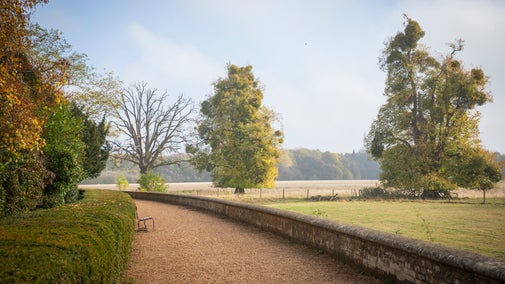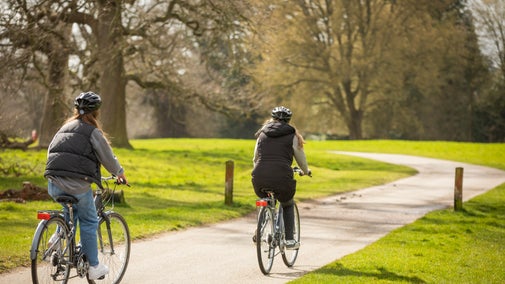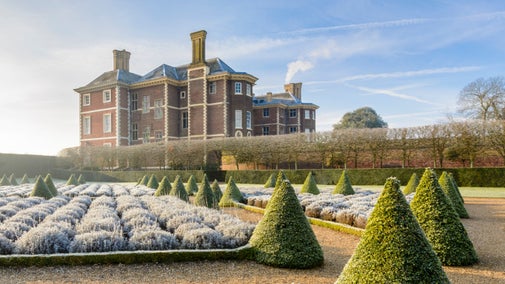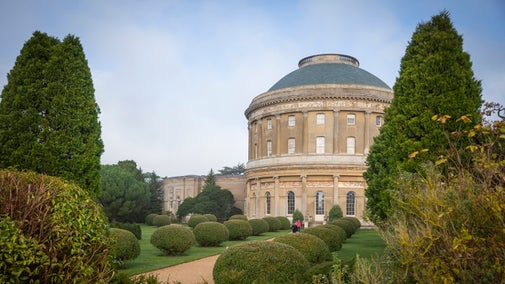
Discover more at Ickworth
Find out when Ickworth is open, how to get here, the things to see and do and more.

Ickworth House was far from being just a comfortable home, it was designed to impress. Grand yet functional, austere and splendid and created to entertain on a grand scale for favoured guests. Discover more about the house and what treasures you can see when you visit.
Various dates
Discover the story of the house and it's collection on one of our specialist tours, led by one of our team members. Book your place here

Built as an 18th-century palace to showcase the many treasures and art collected by the Earl Bishop, who survived two older brothers to unexpectedly inherit the Estate in 1779. You can explore time and time again to uncover unique treasures, art and the stories of this extraordinary family and their staff.
In 2018-20, Ickworth’s biggest ever roof conservation project was undertaken to protect the grand Rotunda and all of its treasures. With the roof wrapped in 270 miles of scaffold, 2,500 objects moved in the house and 30,000 slates replaced, it was a huge undertaking. When you visit, take time to marvel at the new roof in all its glory.
The house you see today is the vision of the 4th Earl of Bristol, known as the Earl Bishop. He was descended from a rather eccentric family. His father John, Lord Hervey, third son of the 1st Earl of Bristol, was bisexual and a notorious and prominent figure at George II’s Court. His mother was the beautiful Mary 'Molly' Lepel, a former lady-in-waiting to Queen Caroline.
The Earl Bishop, upon inheriting the estate, was keen to follow the latest styles and aspired to build a house that would in his own words unite ‘magnificence with convenience.' Started in 1795, the building was still just a shell when he died in 1803 and his son was left to complete his vision.
He had spent his life travelling in Europe and secured a vast collection of art and treasures. Sadly, his collection was confiscated by Napoleonic troops in 1798 and he spent the remainder of his days trying to recover his losses. His son, the 5th Earl who later became the 1st Marquess, took over the building project and eventually moved in with his family in 1829.

The original concept of a magnificent central house with two wings as galleries was changed by the 5th Earl, who settled upon making the East Wing the family home and the central Rotunda as the gallery to impress visitors and also for grand entertaining.
The focal point of the main hall today is a large sculpture of The Fury of Athamas depicting a Greek tragedy of madness and murder. The Earl Bishop commissioned the statue from John Flaxman, a promising young sculptor, for his envisioned sculpture gallery.
Life as a servant was subject to the whims of the resident family and their guests; it was hard work with incredibly long hours. There was a strict hierarchy among the servants and life could be incredibly tough.
By 1910 the 4th Marchioness of Bristol, Lady Theodora Hervey, became concerned by the hardships of her servants and over the years did much to improve living conditions. You will discover how she used her large inheritance to renovate the Rotunda servants’ quarters with electric lights, hot water boilers and new bathrooms.
As you wander downstairs through the corridors and rooms, you’ll discover life in the 1930s. It’s a real hands-on experience – you can open the drawers and discover the tools and materials that would have been used by the servants.
It wasn’t all hard work, of course. In the Servants’ Hall, you’ll find a shove ha’penny board scored into the dining table, you can play cards, bagatelle or tiddlywinks, bash out a tune on the piano or sit and relax with a 1930s newspaper or magazine.

Find out when Ickworth is open, how to get here, the things to see and do and more.
Ickworth's garden was the first of its kind in the UK. Designed for privacy, space and freedom, it's a distillation of the gardens of classical Italy given an individual English touch.

Ickworth is home to one of the most important collections of 18th-century silver in Europe. Learn more about the collection at Ickworth in Suffolk.

Explore the parkland at Ickworth, encircled with layers of history, landscape and classic architecture. Enjoy space, freedom and inspiring views as you wander at your leisure.

Find out more about cycling at Ickworth, including the cycle hire hub available in the car park. Pack a picnic and start your adventure.

Treat yourself in one of the cafés at Ickworth with a variety of tasty treats, light snacks and hot and cold drinks. Or grab a bargain as a souvenir of your visit in the shop or Plant Centre.

Discover how Ickworth completed a major conservation project to repair the Rotunda roof and safeguard the future of this classic Italianate building for years to come.
Historic houses and buildings are full of stories, art and collections. Learn more about their past and plan your next visit.

From picturesque villages and charming country houses, to the only surviving Regency playhouse in Britain, there are plenty of houses and buildings to discover in Suffolk.
